As urban planners and design engineers grapple with the critical task of illuminating public spaces, LED street lights have increasingly become the preferred solution. However, determining the optimal spacing for these lights is a complex process involving various factors, including intensity, pole height, and environmental conditions.
This blog post provides an in-depth examination of the methods to calculate the optimal spacing. Whether you’re a city planner, a landscape architect, or simply an enthusiast, this guide will help you understand the science behind effective street lighting design.
Gathering Necessary Information
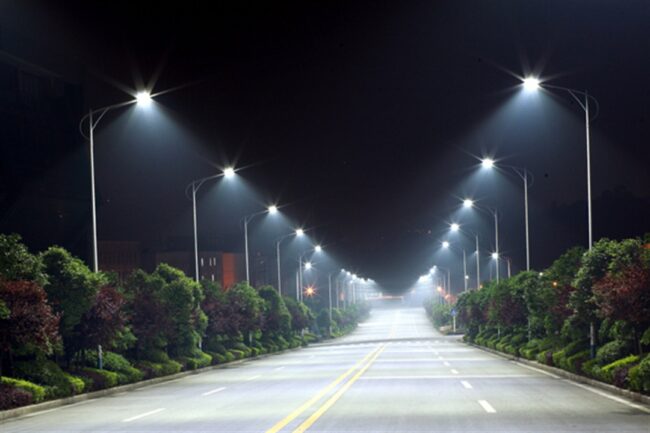
Embarking on this calculation journey necessitates an array of essential data. First and foremost, it’s important to understand the layout of the area to be lit. This includes the length, width, and curvature of the road.
Keep in mind that more complex road designs may require additional considerations, such as the angles at which lights are installed. It’s equally important to identify any potential obstacles that could interfere with light dispersion, such as buildings, trees, and other infrastructure.
Having compiled the area’s layout specifics, turn your attention to the region’s regulatory framework. This will dictate certain aspects of your lighting design. Different countries and states have their own rules regarding street light placement and brightness levels, often developed by engineering or lighting associations.
These guidelines ensure both safety and energy efficiency. They may define minimum illumination levels, maximum acceptable shadows, or other factors that influence LED street lights spacing.
Determining Required Levels
Delving into light levels, it’s crucial to understand their significance in this context. Appropriate illumination ensures safety and security for pedestrians and motorists alike. It reduces the risk of accidents, deters crime, and enhances visibility. Light levels typically depend on the road type – highways require more illumination than residential areas, for instance.
However, remember that excessive brightness can lead to light pollution and energy wastage. Striking a balance between safety and sustainability is, therefore, key.
Guidelines for optimal light levels are available from organizations such as the Illuminating Engineering Society (IES) or the European Committee for Electrotechnical Standardization (CENELEC). They provide comprehensive light level recommendations, factoring in road type, traffic volume, and surrounding environmental conditions.
Assessing Characteristics
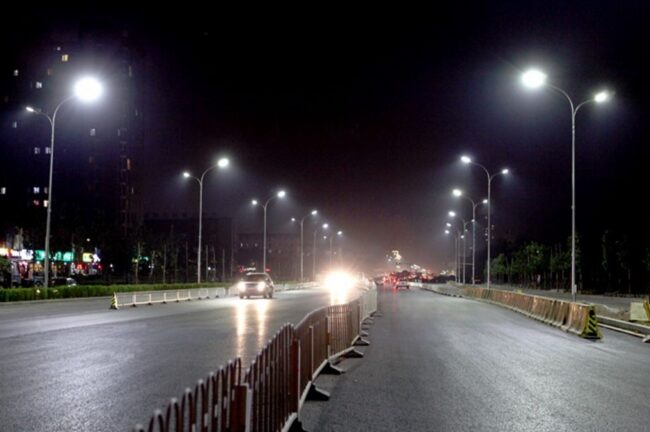
Digging deeper into LED street light specifications, you’ll encounter several critical parameters. Primarily, the luminous intensity of a light source, measured in lumens, determines the amount emitted in a particular direction.
Lumen output varies with different LED models and affects the optimal spacing of street lights. Another crucial aspect is the beam angle, which impacts how it spreads and thus, the illumination pattern on the ground.
Beyond these factors, consideration of color temperature can also play a crucial role. This denotes the perceived color of the light source, measured in Kelvin (K). LED street lights usually fall within the range of 3000K (warm white) to 6000K (cool white).
The chosen color temperature influences the visual comfort of pedestrians and drivers, which in turn, affects their safety. Therefore, select the LED street light characteristics carefully, considering the specific requirements of the location.
Factoring in Environmental Conditions
No optimal LED street light spacing calculation would be complete without considering the surrounding environment. Natural conditions, such as fog, rain, and snow, can significantly impact light visibility.
Regions prone to harsh weather conditions might need closely spaced lights to ensure sufficient illumination under unfavorable circumstances. Other environmental factors to consider include existing ambient light and the reflectance of the road surface.
On the other hand, a high incidence of wildlife could necessitate certain adjustments. Over-illumination may disrupt animal behaviors and migratory patterns. In such instances, a more nuanced approach to spacing and brightness levels could be necessary. It’s crucial to understand that the optimal solution depends on the unique combination of factors at play in each specific location.
Accounting for Maintenance Considerations
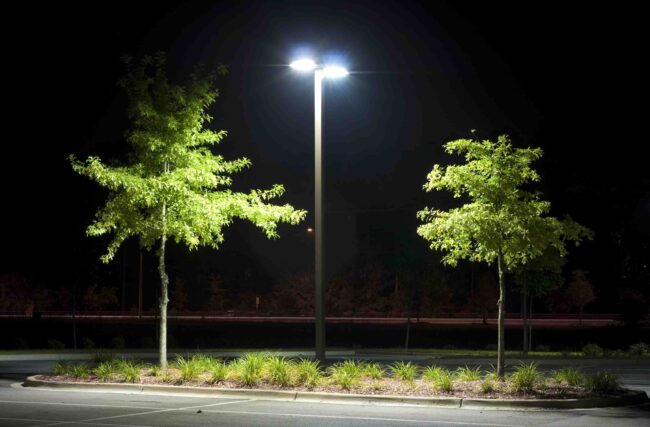
Maintenance is an oft-overlooked yet vital aspect of street light spacing. LEDs have a long lifespan, often lasting up to 50,000 hours.
However, they still require periodic checks for performance drops, flickering, or failures. The spacing of street lights can impact the efficiency of these maintenance checks, influencing both the time and cost of these operations.
Consequently, maintenance schedules should be incorporated into street light spacing decisions. Strategically placed lighting can streamline maintenance routes, saving valuable resources in the long run.
Additionally, considering potential future upgrades during the design phase may prevent costly retrofits. As LED technology continues to evolve, ensuring easy access for upgrades can greatly extend the usefulness of your infrastructure.
Calculating Optimal Spacing with Software Tools
In the age of digital technology, software tools can greatly simplify the process of calculating optimal LED street light spacing. These programs use the data you’ve collected, including area specifics, light levels, LED characteristics, and environmental conditions, to simulate various lighting scenarios. Programs such as DIALux, AGi32, and Relux are widely used for this purpose.
These tools enable you to visualize the results under different conditions, making it easier to select the best spacing. They often include features that account for regulatory compliance, helping ensure your design meets local guidelines. Remember, however, that these programs are just tools; they aid decision-making but do not replace the need for professional judgment and experience.
Manual Calculation Methods
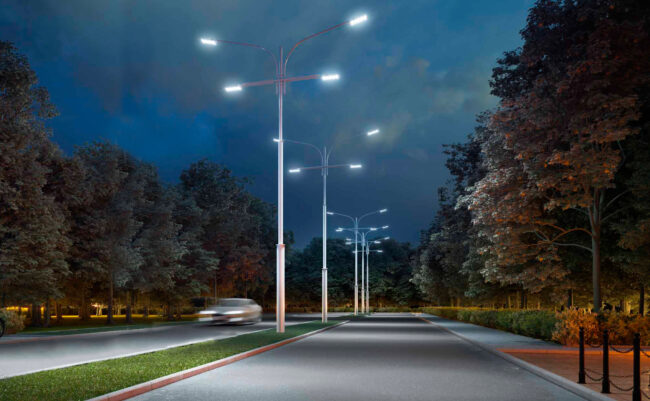
While software can be an invaluable aid, understanding the underlying manual calculation methods is still essential. Manual calculations usually involve determining the ‘Spacing to Mounting Height Ratio‘ (SMHR), a dimensionless parameter that helps decide the appropriate distance between street lights.
This ratio is dependent on factors such as the type of road, the intensity and angle of the light beam, and the required illumination level.
The process involves determining the mounting height (the distance from the source to the road surface) and using the SMHR to calculate the optimal spacing. For instance, an SMHR of 4 for a street light with a mounting height of 8 meters would suggest an optimal spacing of 32 meters between them. It’s worth noting that this method provides a basic estimate and may require adjustment based on other factors discussed earlier.
Final Words
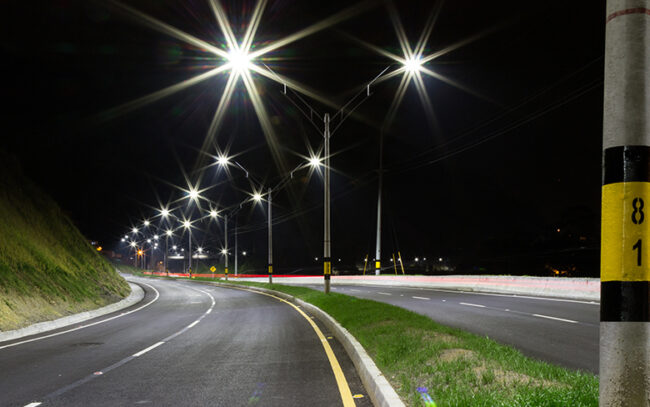
At the heart of urban illumination lies the intricate task of calculating the optimal spacing for LED street lights. This process integrates an array of factors—from gathering essential information, discerning the required light levels, and understanding LED light characteristics, to factoring in environmental considerations and maintenance schedules.
Software tools and manual methods, when applied wisely, can help you strike a balance between safety, sustainability, and cost efficiency.
